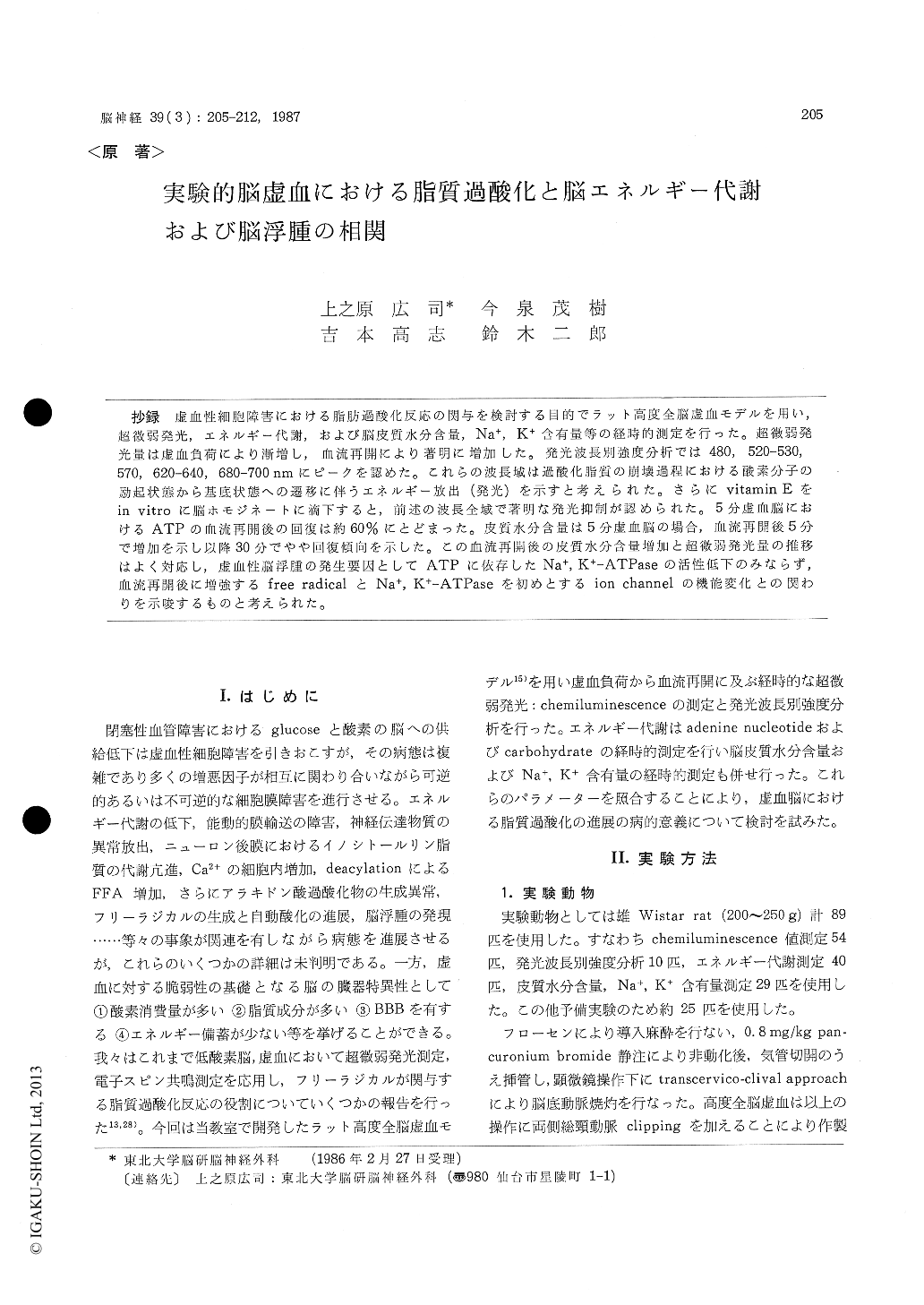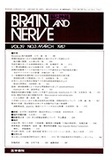Japanese
English
- 有料閲覧
- Abstract 文献概要
- 1ページ目 Look Inside
抄録 虚血性細胞障害における脂肪過酸化反応の関与を検討する国的でラット高度全脳虚血モデルを用い,超微弱発光,エネルギー代謝,および脳皮質水分含量,Na+,K+含有量等の経時的測定を行った。超微弱発光量は虚血負荷により漸増し,血流再開により著明に増加した。発光波長別強度分析では480,520-530,570,620-640,680-700nmにピークを認めた。これらの波長域は過酸化脂質の崩壊過程における酸素分子の励起状態から基底状態への遷移に伴うエネルギー放出(発光)を示すと考えられた。さらにvitaInin Eをin vitroに脳ホモジネートに滴下すると,前述の波長全域で著明な発光抑制が認められた。5分虚血脳におけるATPの血流再開後の回復は約60%にとどまった。皮質水分含量は5分虚血脳の場合,血流再開後5分で増加を示し以降30分でやや回復傾向を示した。この血流再開後の皮質水分含量増加と超微弱発光量の推移はよく対応し,虚血性脳浮腫の発生要因としてATPに依存したNa+,K+—ATPaseの活性低下のみならず,血流再開後に増強するfree radicalとNa+,K+—ATPaseを初めとするion channelの機能変化との関わりを示唆するものと考えられた。
In order to unravel possible involvement of free radical reactions and lipid peroxidation in the ischemic cell damage, chemiluminescence, ener-gy metabolism, water content and concentrations of Na+ , K+ were measured with time, using highly ischemic whole brain models of rats. The amount of chemiluminescence value increased gra-dually with the ischemic load, and did markedly with recirculation of the blood flow. In the analysis of the intensity of chemiluminescence by wavelengths (the chemiluminescence spectroana-lysis), the peaks were observed at 480, 520-530, 570, 620-640 and 680-700 nm. These wavelengths were taken to suggest the release of energy (lumi-nescence) associated with the transition of singlet oxygen to the grounded state during the break-down of the lipid hydroperoxide. When vitamin E was added on the brain homogenate in vitro, the luminescence was inhibited markedly for all the wavelenghts mentioned above. With regard to the kinetics of energy metabolism, a short 5-minutes ischemic loading delayed recovery of adenine nucleotide after recirculation of the blood flow, and permitted ATP level to regain up to only about 60% of the pre-loading level. In case of the 5-minutes ischemic load, the cortical water content began to increase at 5 minutes after re-circulation of the blood flow and showed sign of recovery in 30 minutes. The time-course increases in the cortical water content following recircula-tion of the blood flow well corresponded with the time-course changes in the amount of chemilum-inescence value. And there seemed to be present-ed as the causes of ischemic cerebral edema not only the ATP-dependent lowering of activities of Na+ , K+ -ATPase, etc. by the free radicals, rein-forced of the blood flow.

Copyright © 1987, Igaku-Shoin Ltd. All rights reserved.


